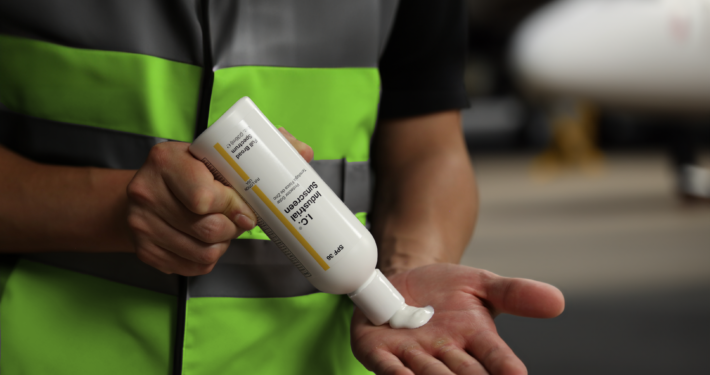Science behind Sunscreens: Chemical, Physical, and the Superiority of Hybrid Formulations
By: Richard Rich
Introduction
Sunscreen, the key defender against harmful ultraviolet (UV) rays, has been incorporated in our daily skin care regimen for decades. However, the science behind its working principle and its different types, notably chemical, physical, and hybrid sunscreens, is a fascinating field that remains relatively obscure to many. This article aims to elucidate the underlying mechanisms that make sunscreens effective and compare the advantages and disadvantages of chemical and physical sunscreens. Finally, we will delve into why hybrid sunscreens offer the best of both worlds.
Ultraviolet Radiation and Skin Damage
To understand how sunscreens work, one must first understand the damage they aim to prevent. Sunlight, though vital for many biological processes, carries with it UV radiation, which can be harmful in excessive amounts. UV rays are classified into three types: UVA, UVB, and UVC. UVC rays are mostly absorbed by the ozone layer, but UVA and UVB rays can reach the earth’s surface and cause skin damage. While UVA rays penetrate deep into the skin, causing premature aging and wrinkles, UVB rays are primarily responsible for sunburn and play a critical role in developing skin cancer.
Chemical Sunscreens
Chemical sunscreens, also known as organic sunscreens, are composed of various compounds, including oxybenzone, avobenzone, octisalate, octocrylene, homosalate, and octinoxate. These compounds contain carbon atoms and work by absorbing UV radiation.
When the UV rays hit the skin, the molecules in the sunscreen absorb the radiation and convert it into a less harmful form of energy, such as heat. This process happens due to the unique structure of the molecules that allows their electrons to absorb UV energy and jump to a higher energy state. They then return to their normal state by releasing the absorbed energy in the form of less harmful infrared energy (heat), which is subsequently dissipated into the environment. Thus, the skin is protected from the direct impact of UV rays.
The main advantage of chemical sunscreens is their ability to provide a transparent, non-greasy layer on the skin, which is more comfortable and aesthetically pleasing to wear. However, some chemicals used in these sunscreens have raised concerns regarding skin sensitivity, potential hormonal disruption, and environmental toxicity.
Physical Sunscreens
Physical sunscreens, or inorganic sunscreens, employ active mineral ingredients such as titanium dioxide and zinc oxide to protect the skin. They work differently than chemical sunscreens by providing a physical barrier that reflects or scatters incoming UV rays, preventing them from penetrating the skin.
Physical sunscreens are often recommended for those with sensitive skin as they are less likely to cause irritation or allergic reactions. They also have a broad-spectrum coverage, meaning they can protect against both UVA and UVB rays effectively. However, a common drawback of physical sunscreens is their tendency to leave a white cast on the skin, and they can often feel heavier and greasier, which many users find unappealing.
Hybrid Sunscreens: The Best of Both Worlds
Hybrid sunscreens, as the name implies, combine both physical and chemical filters to maximize protection while mitigating the downsides of each type. The incorporation of both physical and chemical filters results in a product that offers comprehensive protection against the entire UV spectrum.
These sunscreens combine the strength of physical blockers’ broad-spectrum coverage with the aesthetically pleasing finish of chemical sunscreens. The physical components provide immediate protection upon application, while the chemical components ensure a minimal white cast and a comfortable, lightweight feel. Moreover, formulators of hybrid sunscreens have become more adept at selecting and balancing ingredients to minimize skin sensitivity and environmental concerns associated with certain chemical filters.
On the molecular level, hybrid sunscreens offer an optimal defense strategy against UV radiation. The physical blockers reflect and scatter a significant portion of UV rays while the chemical components absorb the radiation that may bypass the physical barrier, converting it into harmless heat. This synergistic mechanism offers superior protection and, in turn, makes hybrid sunscreens the best choice for comprehensive sun protection.
Conclusion
Understanding the science behind sunscreens offers us an in-depth perspective on their functionality and the importance of their usage. While both chemical and physical sunscreens have their merits and demerits, it is the amalgamation of the two – the hybrid sunscreens – that offers the best protection. As we advance in the field of dermatological science, the development of sunscreens that provide superior skin protection, maintain aesthetic desirability, and consider environmental impact will remain a critical endeavor.







